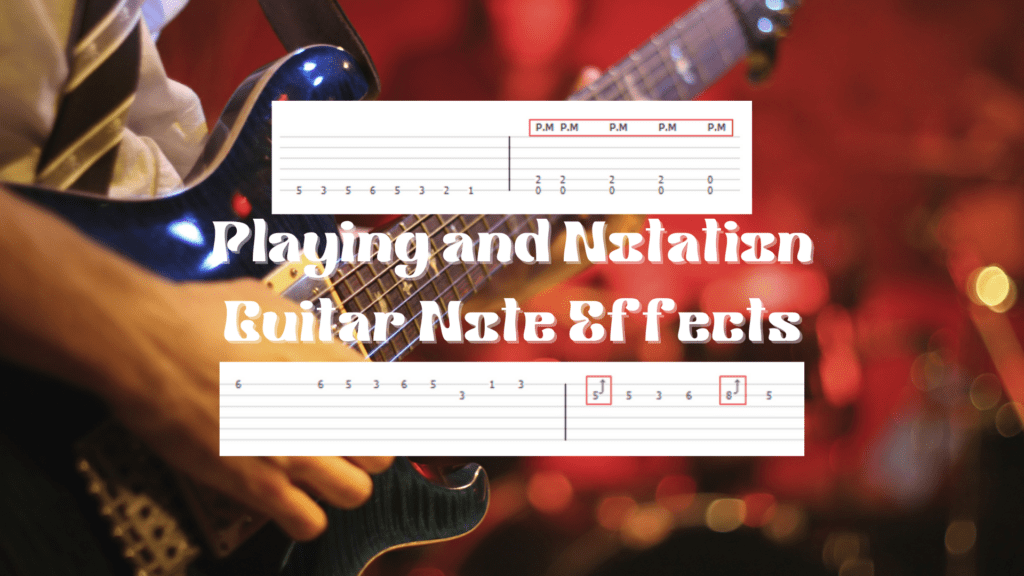Guitarists have a wide array of techniques at their disposal to make their playing expressive and dynamic. Certain playing techniques, known as note effects or articulations, can completely change the timbre and feel of a note or phrase. In this comprehensive guide, we’ll explore how to notate guitar note effects and how to while taking a look at their spectrographs and listening to examples.
From essential techniques like hammer-ons, pull-offs, palm muting, bends, and vibrato to more advanced methods like harmonics, string slides, and more, these articulations add flair and personality to guitar parts. Simply turn your playing into Tabs with Guitar2Tabs and then add these guitar note effects notations to your arrangement, by exporting a GuitarPro file.
Read on to learn about these guitar techniques that add depth and dimension to your playing!
Hammer-Ons and Pull-Offs – Legato Guitar Techniques for Smoothness

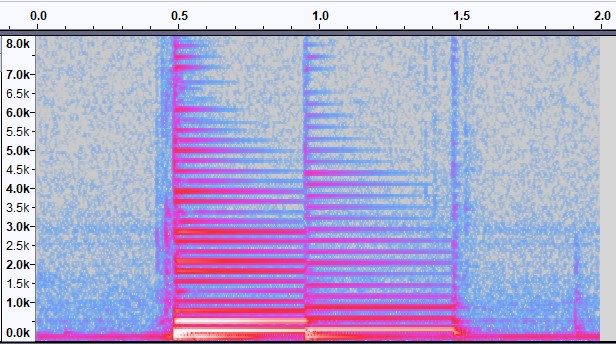
Hammer-ons and pull-offs fall under the category of legato playing techniques. Legato refers to smooth, connected notes without re-plucking the string. To execute a hammer-on, use a fretting hand finger to “hammer” down on a higher fret, sounding a note without plucking. For pull-offs, pluck the string initially, then pull the finger off to a lower fret. Hammer-ons and pull-offs connect notes fluently on the same string. In tablature, hammer-ons and pull-offs are notated with a curved line connecting the notes. Integrating hammer-ons and pull-offs into your playing makes riffs and solos flow effortless
Natural Harmonics – Ethereal and Bell-Like Sounds

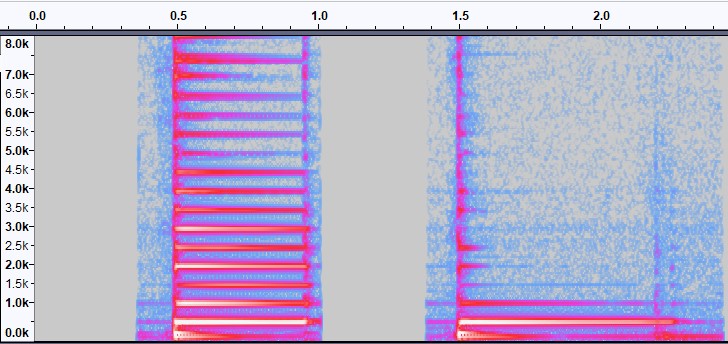
Harmonics, also called flageolets, produce airy, ringing tones. To play a natural harmonic, lightly touch a string above a fret without pressing down. Then, pluck the string as you would regularly. The note rings out as a harmonic. On the guitar neck, common locations for harmonics are above the 5th, 7th, and 12th frets. Harmonics create an ethereal, chime-like sound. In TAB, harmonics are notated by putting the fret number in parentheses or brackets. Sprinkle harmonics into your playing to add interest and texture.
Palm Muting – A Muffled, Percussive Guitar Effect

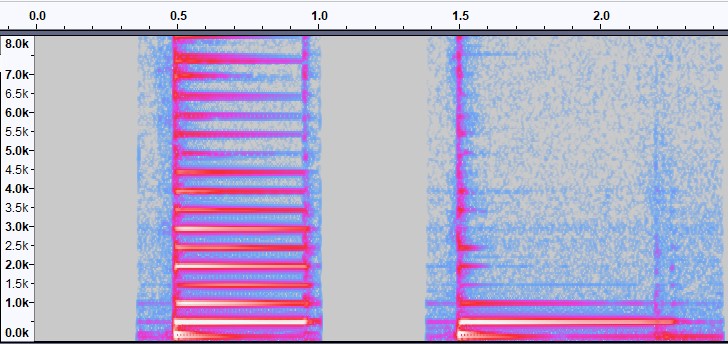
Palm muting is a popular technique in rock and metal guitar styles. To palm mute, rest the side of your picking hand palm lightly on the strings above the guitar bridge. As you play notes, the palm dampens their sustain, creating a muted ‘chugging’ sound. Palm muting can be used on single notes, power chords, and riffs. In TAB, palm muted notes are marked by ‘P.M.’ above the staff. Vary your palm muting rhythms and patterns to punctuate driving guitar parts.
String Slides – Smooth Connections Between Notes and Chords
´

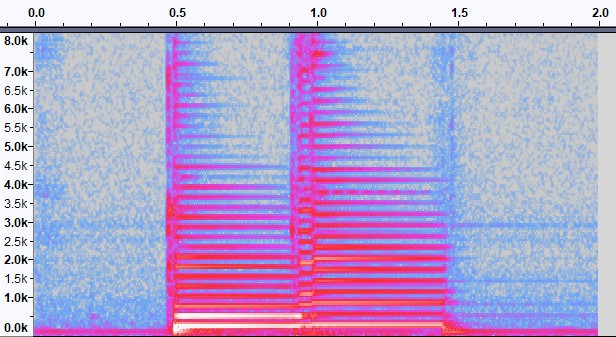
String slides are a great way to transition between notes and chords for a seamless, glissando effect. To execute a slide, fret a note then slide your finger up or down the neck to the next note or chord. The shift between pitches should be audible. Slides can be fast or slow depending on the style. Downward slides into a note are called ‘slide ins,’ while ‘slide outs’ slide away from a note. In tablature, slides are indicated by angled lines between notes. Incorporate slides into bends and connecting chord shapes too.
String Bends – Flexible Pitch for Expressive Technique


String bends are a signature technique in blues and rock lead guitar playing. To bend, push or pull the string sideways to temporarily raise the pitch. Bends are often released back to the original pitch. The duration and intensity of the bend varies. Bends of a whole step and half step are common. In TAB, bends are marked by angled arrows pointing up to indicate the pitch change. Practice bending strings in tune to nail this versatile technique.
Vibrato – Adding Expression Through Pitch Fluctuation

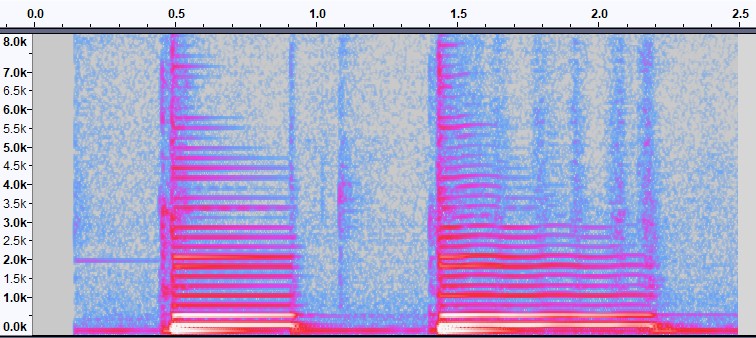
This is a rapid, pulsating pitch effect that adds expression and vocal-like sounds. Vibrato fluctuates the pitch slightly by rocking a fretting finger back and forth. The width and speed of the vibrato can vary. In standard notation, vibrato is notated with a wavy line above the note. In TAB, the ‘V’ symbols can also indicate vibrato. Vibrato is often added to long notes, bends, and chords. Use it judiciously as an ornamentation.
Need a Starting Point for your Transcription? Use some AI Magic!
Writing down tabs by ear can be tedious work. Luckily, there are plenty of tools that make your life a lot easier. The Klangio Applications transcribe different instruments for you within seconds. You can export your transcription in different formats, or simply view the results directly in the browser. And the best part: You can try them out for free as much as you like. Check out:
- Piano2Notes: Transcribe Pianos
- Guitar2Tabs: Transcribe Guitars and Bass
- Sing2Notes: Transcribe Singing
- Melody Scanner: Turn any Song into an Arrangement for your Instrument
All thats left is to notate guitar note effect, as you’ve just learned, by using one of the editable download formats of these transcriptions.
Conclusion:
From essential techniques like hammer-ons, pull-offs, and palm muting to advanced methods like harmonics, slides, and vibrato, guitarists have an exciting palette of articulations at their disposal. Using these guitar note effects expands the possibilities for phrasing, expression, and style. Notate guitar note effects for TAB, is essential to accurately communicate these guitar techniques on paper. Time to write your own Arrangement. Integrate some new articulations into your playing to take your guitar skills to the next level!
